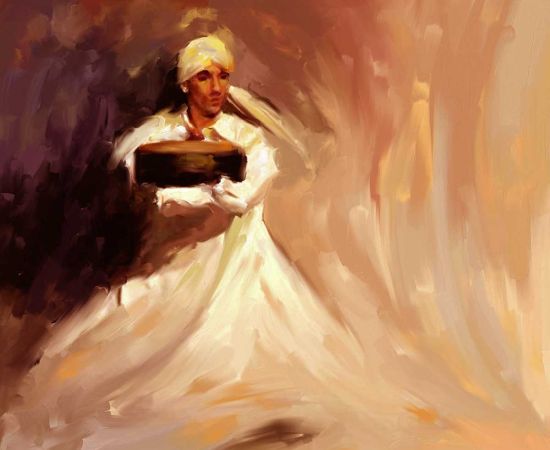More Coverage
Twitter Coverage
Satyaagrah
Written on
Satyaagrah
Written on
Satyaagrah
Written on
Satyaagrah
Written on
Satyaagrah
Written on
JOIN SATYAAGRAH SOCIAL MEDIA
"Twice a year, new frontier": Starting in 2024, Indian universities will transition to biannual admissions, revolutionizing higher education by offering flexible entry points and aligning India's academic standards with the world's top educational systems

On June 11th, a significant shift in the admissions process for Indian universities was announced by the University Grants Commission (UGC). Starting from the 2024-25 academic year, universities and higher education institutions across India will be permitted to conduct admissions twice annually. This change aligns India's admission procedures more closely with those observed in many international universities.
|
The introduction of biannual admissions, authorized by the UGC, opens new avenues for Indian students. According to UGC Chief Jagadesh Kumar, the new system will feature two distinct admission cycles: one in July-August and another in January-February. This adjustment aims to provide greater flexibility and increased opportunities for students seeking higher education.
Traditionally, Indian universities and colleges have adhered to a single admission cycle, primarily occurring in July-August. This structure has governed the academic session that typically commences in July-August and concludes in May-June of the following year.
In a statement to the press, Jagadeesh Kumar highlighted the benefits of this new system, noting, "If Indian universities can offer admission twice a year, it will benefit many students such as those who missed admission to a university in the July-August session due to a delay in the announcement of board results, health issues, or personal reasons.” This move by the UGC is poised to alleviate some of the pressures faced by students who, under the previous system, might have had to wait an entire year to apply if they missed the single admission window due to unforeseen circumstances.
He added, "If Indian universities can offer admission twice a year, it will benefit many students such as those who missed admission to a university in the July-August session due to a delay in the announcement of board results, health issues, or personal reasons."
Kumar further explained that adopting a biannual admission system, similar to practices common in universities worldwide, could significantly enhance the scope of international collaborations and student exchange programs for Indian higher education institutions. "As a result, our global competitiveness will improve, and we will align with the global educational standards," he emphasized.
|
One potential challenge identified by Kumar in implementing such a system is the availability of adequate resources. He stressed that only those institutes which possess the necessary infrastructure and are capable of reorganizing their resources effectively might be able to adopt this biannual admission approach seamlessly. He reiterated the potential benefits, stating, "As a result, our global competitiveness will improve, and we will align with the global educational standards."
Notably, the UGC has not mandated the biannual admission system. Higher Education Institutions (HEIs) and universities have the option to continue operating under a single admission cycle as they currently do. Kumar highlighted the implications of adopting a biannual system, saying, "If HEIs adopt biannual admissions, they need to work on administrative intricacies, good planning for increased use of available resources, and providing seamless support systems for the smooth transition of students admitted at dissimilar times of the year. HEIs can maximize the usefulness of biannual admissions only when they sufficiently prepare faculty members, staff, and students for the transition."
This approach allows HEIs the flexibility to assess their capability and readiness to implement such a change without imposing a uniform requirement across all institutions. The voluntary nature of this system ensures that each institution can tailor their admission strategy to best fit their unique circumstances and capabilities.
Interestingly, biannual admissions for open and distance learning (ODL) and online modes were already permitted by the UGC starting in January and July of the previous academic year. Reflecting on the impact of this policy, Kumar provided specific enrollment figures to illustrate its success. He noted, "After UGC allowed biannual admissions last year, HEIs informed on the UGC portal that a total of 19,73,056 students enrolled in July (regular cycle) and an additional 4,28,854 students joined in January 2023 in ODL and online programs." This represents a substantial increase, with around 22% more students taking advantage of the additional admission period, marking a notable boost for the institutions involved.
The data underscores the potential benefits of a more flexible admissions process, suggesting that similar results could be achieved in traditional academic programs if HEIs decide to adopt the biannual system. This shift could lead to increased educational access and continuity, catering to a broader range of student needs and schedules.
|
Mixed reaction from universities
While the UGC's decision to allow biannual admission cycles has been seen as a progressive step for enhancing student access to higher education, it has also been met with mixed reactions from universities. Many institutions have expressed reservations, pointing out that the existing academic structures may not be fully equipped to support such a significant adjustment. An unnamed official from Delhi University highlighted these concerns in a conversation with the Hindustan Times, stating, "We are dependent on the Common University Entrance Test (CUET), which is conducted around May. UGC has not given any clear guidelines on whether the January admission cycle will happen through CUET or through entrance exams."
In response to these concerns, UGC Chief Jagadesh Kumar clarified the position of the commission, emphasizing that it will be up to the individual universities to determine how they want to structure their admission processes under the new system.
Amity University Vice Chancellor Balvinder Shukla, while supportive of the University Grants Commission's decision for biannual admission cycles, also shared some reservations concerning the readiness of Indian institutions to adopt this new system effectively. He voiced his concerns, stating, "There are a lot of things to consider before jumping into a decision. Moreover, school academic sessions and the beginning of college admissions are aligned in a certain way. There is a possibility that applications during the January cycle will be very low."
|
Experts in the field of education, however, see the move towards biannual admissions as a strategic alignment with the National Education Policy (NEP), which aims to elevate Indian higher education to global standards. They acknowledge that while the implementation of such a system will require careful and meticulous planning, it ultimately aligns with international educational practices and could significantly enhance the global competitiveness of Indian universities.
These experts added that this adaptation is "in sync with the National Education Policy (NEP) and will only bring us closer to international standards," highlighting the potential long-term benefits of embracing a more flexible and inclusive admission system. The dialogue between educational leaders and policymakers will be crucial in addressing these challenges and ensuring a smooth transition that maximizes the benefits of biannual admissions for all stakeholders.
 Support Us
Support Us
Satyagraha was born from the heart of our land, with an undying aim to unveil the true essence of Bharat. It seeks to illuminate the hidden tales of our valiant freedom fighters and the rich chronicles that haven't yet sung their complete melody in the mainstream.
While platforms like NDTV and 'The Wire' effortlessly garner funds under the banner of safeguarding democracy, we at Satyagraha walk a different path. Our strength and resonance come from you. In this journey to weave a stronger Bharat, every little contribution amplifies our voice. Let's come together, contribute as you can, and champion the true spirit of our nation.
 |  |  |
| ICICI Bank of Satyaagrah | Razorpay Bank of Satyaagrah | PayPal Bank of Satyaagrah - For International Payments |
If all above doesn't work, then try the LINK below:
Please share the article on other platforms
DISCLAIMER: The author is solely responsible for the views expressed in this article. The author carries the responsibility for citing and/or licensing of images utilized within the text. The website also frequently uses non-commercial images for representational purposes only in line with the article. We are not responsible for the authenticity of such images. If some images have a copyright issue, we request the person/entity to contact us at This email address is being protected from spambots. You need JavaScript enabled to view it. and we will take the necessary actions to resolve the issue.
Related Articles
- “Any Indian national or Overseas Citizen of India with educational qualifications acquired in Pakistan will not be eligible for employment in India": UGC and AICTE urge students not to travel Pakistan for higher education
- "Will spoil environment": In Ajmer, a class 12 student victim of gang rape faces school exclusion, triggering CWC action and advocacy to restore her education rights, amidst societal backlash & ongoing efforts to secure her supplemental exam participation
- “Architecture should speak of its time and place, but yearn for timelessness”: Beautiful Mandore Garden located in the city of Jodhpur, Rajasthan known for its rich history, stunning architecture, and lush greenery, making it a popular tourist destination
- “Music in the soul can be heard by the universe”: Konnakol is the art of performing percussion syllables vocally, and often referred to as a "mathematical language" due to the close relationship between the rhythms in Konnakol and mathematical principles
- Jadavpur University initially granted, then revoked permission for Ram Navami celebrations due to student protests & communal threats, sparking intense chaos; BJP criticizes reversal, blaming left-wing pressure; Trinamool defends the university's autonomy
- A Great man Beyond Criticism - Martyrdom of Shaheed Bhagat Singh (Some Hidden Facts)
- After strong reactions from the public on the decision to change the logo of the prestigious institute IIM-Ahmedabad, now institute backtracks that only minor changes in color rendition and fonts
- "Convert to Islam or die under the weight of the sword of Islam, Allahu Akbar”: Fifteen schools in Bengaluru receive bomb threats via email, demanding conversion to Islam, purportedly from a terrorist organization; police dismiss it as a ‘hoax message’
- "Strategy requires thought, tactics require observation": Tanzania now becomes part of India’s strategic outreach focusing on Africa’s east coast, also it has become the 2nd-largest recipient of credit from India as New Delhi races Beijing to woo Africa
- "Revise, reveal, heal": NCERT renames Babri Masjid to '3-domed structure' at Shri Ram’s birthplace, reflecting its 1528 construction with Hindu symbols, and references the Supreme Court's verdict recognizing the site’s historical and cultural significance
- How Communism murdered Freedom of Expression: 100 Years of Russian Revolution
- "And he saw the angel in the marble and carved until he set him free": Granite monolithic Nandi of 16 feet in height and 24 feet long sits atop the Chamundi Hills of Mysore, creation of this colossal image is attributed to Maharaja Dodda Devaraja Wodeyar
- Why Hindu-Sikh genocide of Mirpur in 1947 ignored? Why inhuman crimes of Radical Islamists always hidden in India?
- History, tainted by biases, conceals the valor of Hemu—a Hindu king & military genius in medieval India, orchestrating 22 victories, he reshaped history at the Battle of Panipat, his strategic brilliance defied odds, leaving indelible mark on the warfare
- "हार्वर्ड की भैंस, हार्वर्ड का पानी, हमें क्या": In response to rising antisemitism, Lauder Business School cut ties with Harvard, supports Jew students, amidst campus tensions, Penn faces donor backlash and leadership changes, reflecting global conflicts




























